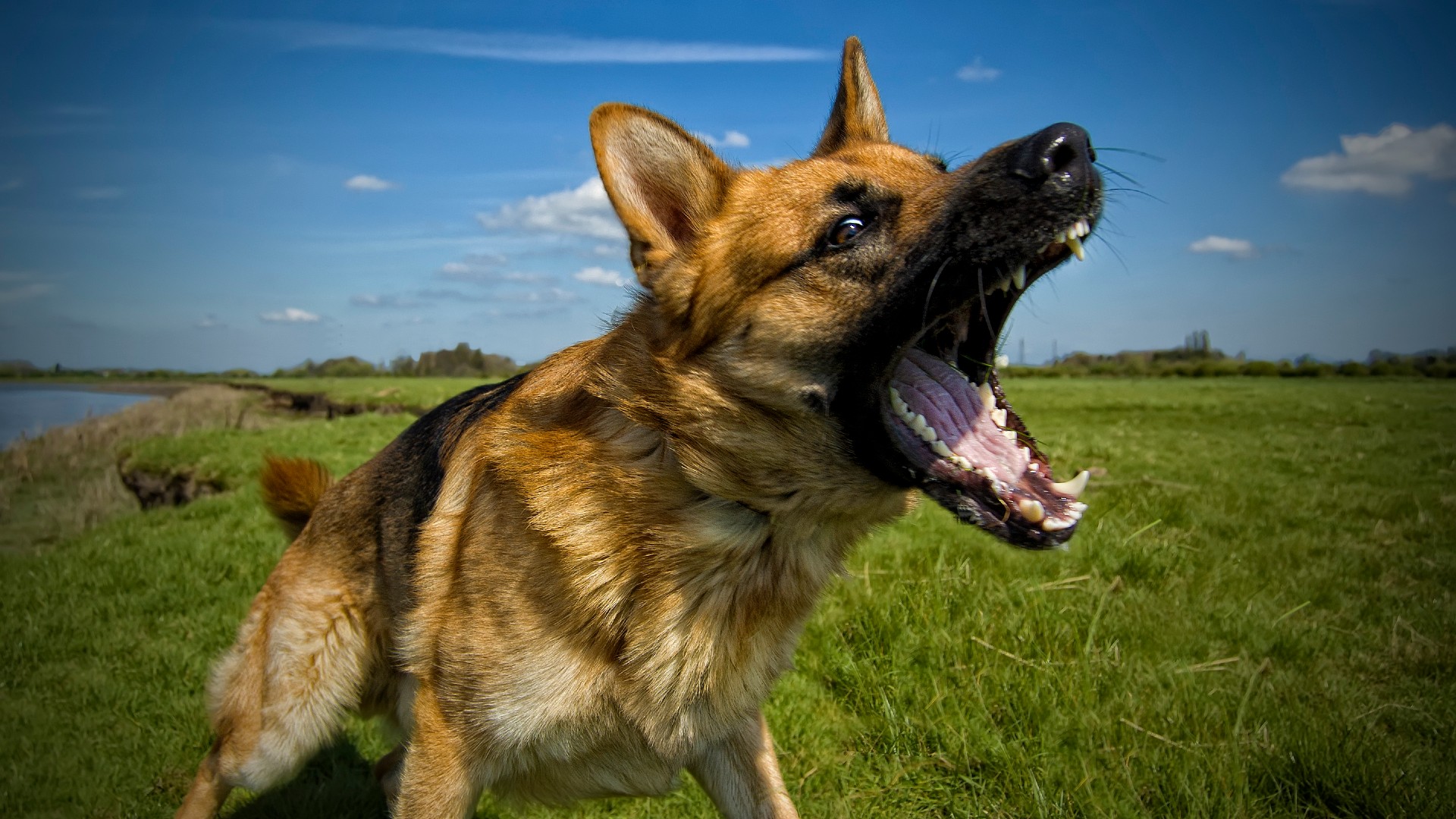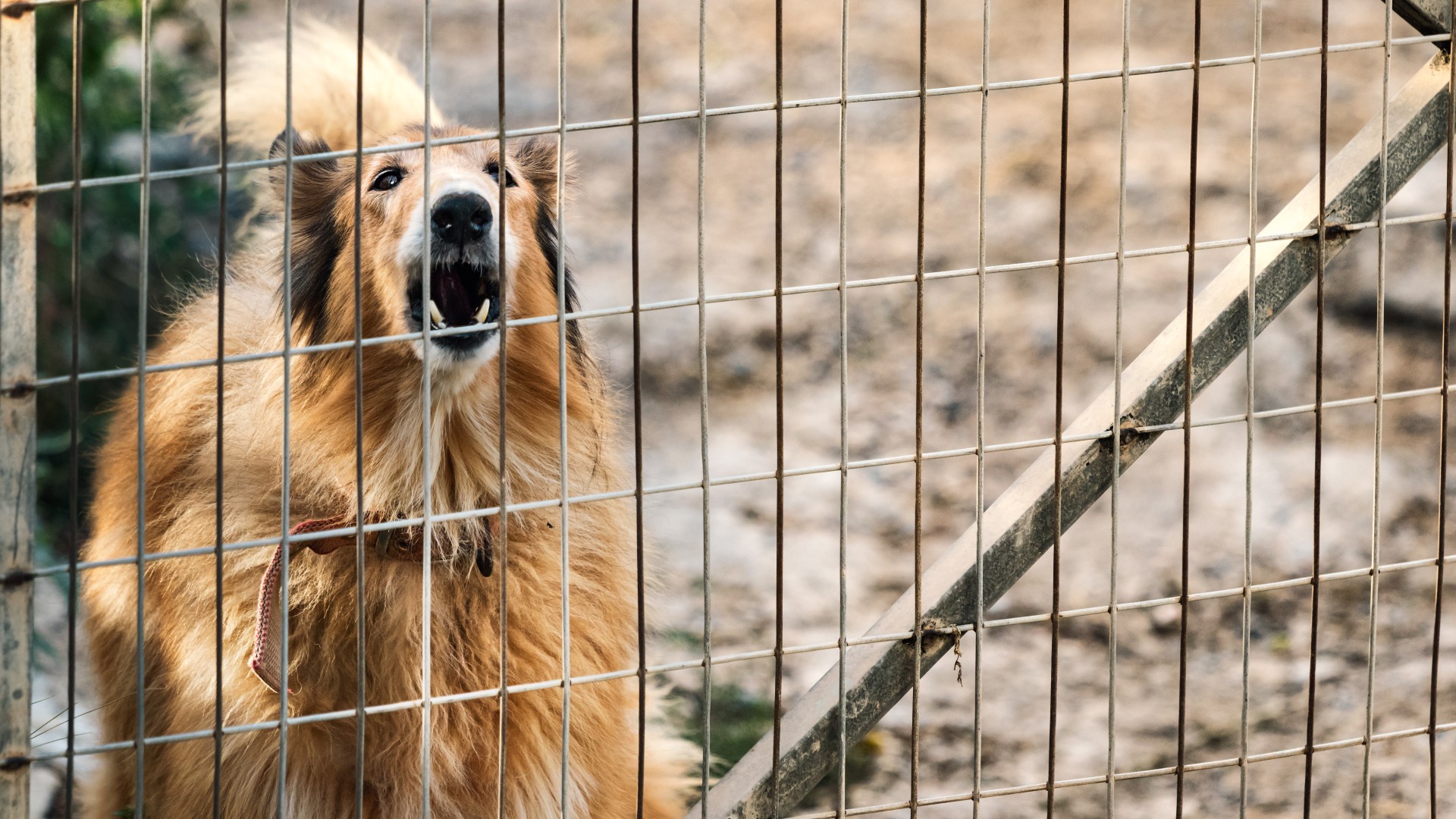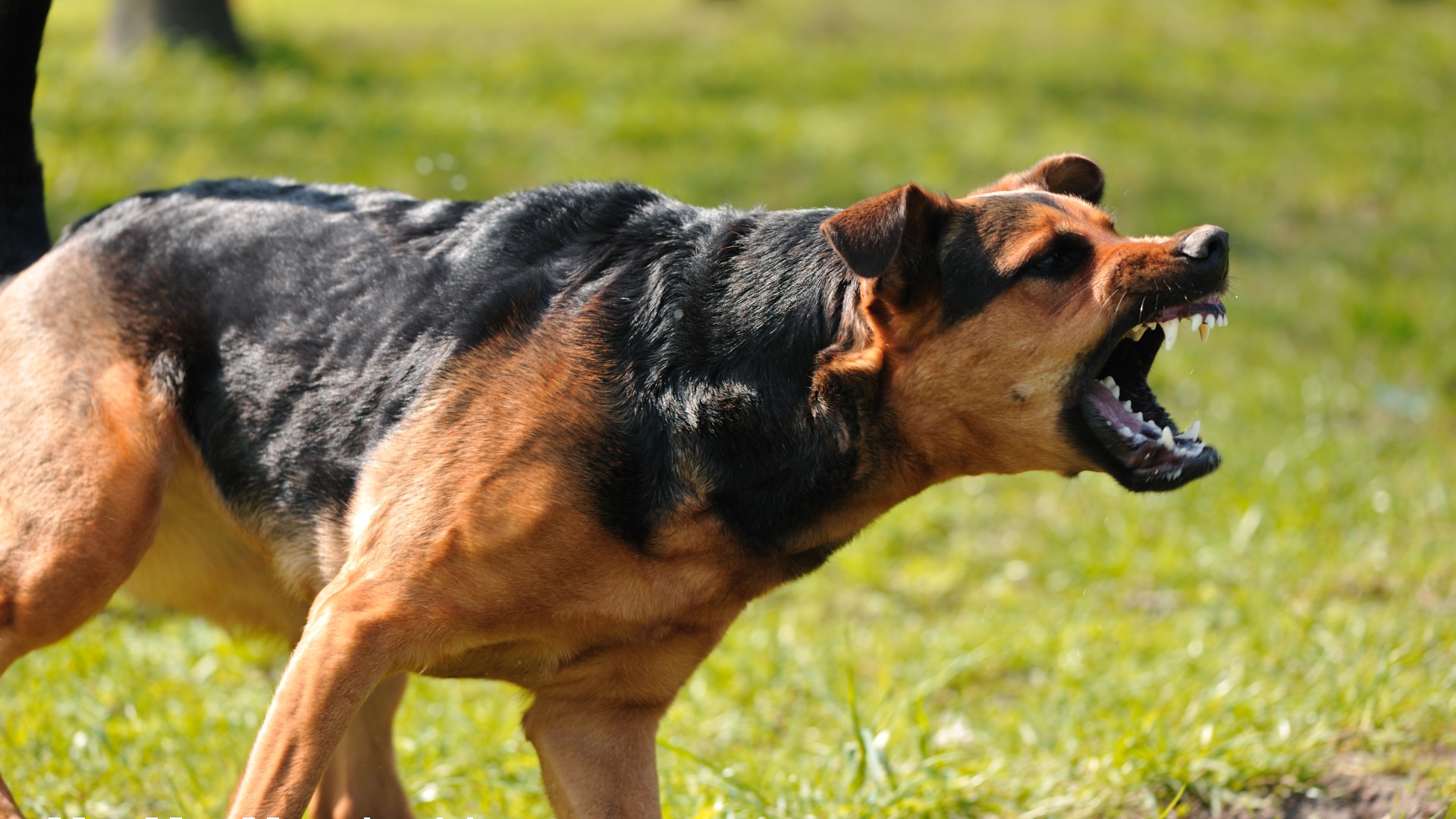What to do you if you encounter aggressive dog behavior
Aggressive dog behavior can be scary, but these top tips will help keep you safe

If you’re an avid outdoor enthusiast, chances are that you’ve encountered aggressive dog behavior at least once in your life. Coming across a dog bearing their teeth at you while you’re out on a run or walk can be a really scary thing, but there’s a lot that you can do to de-escalate the situation.
While looking at things from the dog's perspective probably isn’t high on your priority list in the face of a potential attack, taking some time now to learn about the reasons dogs behave aggressively and what to do if you find yourself on the other end of it, can help keep you safe in a threatening situation.
Let’s take a closer look at some of the reasons why a dog might behave aggressively and what should you find yourself in such a situation.
Reasons for aggressive dog behavior
Understanding why a dog might be behaving aggressively towards you is key to putting a stop to the behavior. Just like us humans, dogs can feel frustrated, scared, or unwell, and all of these things can cause them to act in ways that may be out of character.
“A lot of dog aggression is rooted in fear, and working out what they’re afraid of can help you to calm an aggressive dog down,” says Dr. Joanna Woodnutt. “Food aggression is a type of resource guarding – the dog is afraid you are going to steal his food. Territorial aggression is similar – the dog is worried you’re going to come onto his territory and take what is important to him.”

Most dogs only exhibit aggressive behavior if they sense they’re in danger or feel like they need to defend themselves. They can also become threatening if they feel they’re being cornered and don’t have an escape route. While all dogs have the potential to behave aggressively, rescue dogs may do this more than others due to past traumatic events and histories that have often involved abuse and neglect. Training a rescue dog correctly is a vital skill for new pet parents to learn as a rescue dog that feels safe and secure is less likely to lash out.
Illness and injury are other common causes of aggression, so a normally docile dog may growl, snap, or attempt to bite you if you approach them following an accident. Older dogs affected by cognitive dysfunction or those suffering from a brain tumor may also exhibit sudden threatening outbursts.
Get the best advice, tips and top tech for your beloved Pets
In much the same way that we feel protective of those we love, dogs also feel protective of their owners and will leap to their defense if they feel the situation warrants it. “Some dogs are aggressive because they feel they need to protect their owners, and they’re afraid that you pose a risk to them,” explains Woodnutt. It’s not uncommon to encounter this sort of protective behavior in breeds like the Cane Corso and German Shepherd who are fiercely loyal to their families and don’t warm easily to strangers.
How to prevent an aggressive dog from attacking you
While nobody wants to be the target of an aggressive dog, if you can keep your wits about you there’s a lot you can do to de-escalate the situation. Here are a few tips that can come in handy if you find yourself in a scary situation with a dog.
- Avoid making eye contact with any dog behaving in a threatening manner. Staring is a sign of aggression and may provoke an attack. Use your peripheral vision, which will allow you to look downwards while still monitoring the situation.
- When approaching a yard or area with a growling dog, move as far away as possible. Cross the street if you can and walk on the other side of the road to keep you well clear of their territory.
- Don’t yell and try to remain calm. Raising your voice or screaming will further arouse the dog’s threat system and make their behavior more likely to escalate. If you do speak to them, use soothing tones as you back away.
- Avoid running. Dogs have a high prey drive and are highly likely to give chase. While every part of you may want to sprint your way out of there, move slowly out of sight to reduce the risk that they’ll view you as a predator.
If you regularly exercise outdoors it can also be a good idea to keep a stash of emergency dog treats in your backpack or pocket. Dropping some treats on the ground as you move away from the dog can help direct their attention off of you and onto the food.
Signs a dog may attack

According to the Centers for Disease Control and Prevention (CDC), around 4.7 million dog bites occur in the United States each year. While most dog bite victims believe the bites occurred without warning, Woodnutt says that isn’t always true. “It’s likely the dog was giving plenty of warning signals that were being misinterpreted or ignored. They may also have given those warnings in the past, and have now learned to escalate their aggression to a snap or a growl quickly, in order to get what they need from the situation.”
Most of us aren’t experts in canine body language and because of that, we can miss the red flags that a dog is starting to become frustrated, fearful, or angry. “Dogs can learn to be more aggressive when they feel they are not being listened to,” Woodnutt explains. Learning to spot the signals that a dog may attack can stop a dog from feeling they need to resort to drastic action, like growling or biting. Common warning signs to watch out for, include:
- A change in posture: Before a dog attacks, their posture will often become stiff and tense. The ears may become tucked flat against the head or fully upright and their chest puffed out. A dog who is trying to make himself look bigger and more dominant is telling you to back off.
- Facial expression: Dogs will often bare their teeth before they attack, lick their lips, and you may also notice the whites of their eyes become more prominent. This occurs when a dog moves their head slightly but not their eyes and is known as Whale Eye, a sign of anxiety.
- Verbal warnings: A dog attack is often preceded by a verbal warning that involves growling or snapping. Growling may sound deep and menacing and will usually be accompanied by barking.
- Threatening actions: Behavior such as lunging, nipping, striking, stalking, or mouthing can all indicate an attack.
It’s also important to look out for behavior that you may not traditionally associate with an attack, as Woodnutt explains. “Dogs have a wide variety of communication techniques to prevent arguments and misunderstandings and these can be very subtle, such as yawning or looking away – signs that are easily missed by humans.”
If you find yourself in this situation the most important thing to remember is to appear non-threatening. “Don’t make eye contact, and don’t make sudden movements, as these things can trigger an attack,” says Woodnutt. “It’s best to back off slowly, getting objects between you and the dog if possible.”
What to do if you are attacked

Sometimes things don’t go to plan and implementing the above techniques may not be enough in some cases to prevent an attack. If you do find yourself on the other end of an attacking dog, there are some things you can do to keep yourself as safe as possible.
- Use an object as a shield. If you have something you can put between the dog and your body, do that. Placing a bag or rolled-up jacket in front of you may redirect the dog and cause him to bite the object instead of you. Protect your face, neck, and chest as if you’re going to be bitten, the safest place is the arms or legs.
- If a dog starts biting you, resist the urge to pull away as this can make any potential injury worse. Instead, stand still, put your eyes down, ball your fists up and tuck them under your chin, and don’t move. Most dogs will quickly grow bored with a non-moving target and move away.
- If the dog knocks you over, roll yourself into a tight ball, and clasp your hands behind your neck to protect your throat.
- Move to higher ground if possible and move into a position of height away from the dog as this makes it much harder for them to attack.
- Seek medical attention once it is safe to do so.
Vicious and serious dog maulings are rare, it’s much more common for a dog to issue a single bite as a warning. If this happens, don’t fight fire with fire by trying to hit the dog back as this will only escalate the situation. Remain calm, follow all the tips outlined above, and an attack is likely to be prevented.
If you’re worried about your own dog demonstrating threatening behavior, check out our tips on how to stop dog aggression.

Kathryn is a freelance writer who has been a member of the PetsRadar family since it launched in 2020. Highly experienced in her field, she's driven by a desire to provide pet parents with accurate, timely, and informative content that enables them to provide their fur friends with everything they need to thrive.
Kathryn works closely with vets and trainers to ensure all articles offer the most up-to-date information across a range of pet-related fields, from insights into health and behavior issues to tips on products and training.
When she’s not busy crafting the perfect sentence for her features, buying guides and news pieces, she can be found hanging out with her family (which includes one super sassy cat and a kitten), drinking copious amounts of Jasmine tea and reading all the books.
She has written for a range of publications, including Fit&Well, Top Ten Reviews, LiveScience, Goodto, and Product Hunt.
